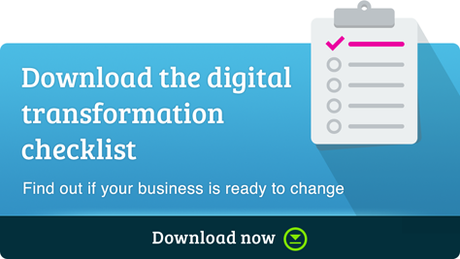You don’t need us to tell you the importance of embedding digital in your business; the majority of business owners are already using digital technologies to improve efficiency, boost their online revenues and gain new customers.
However, a new study from PricewaterhouseCoopers (PWC) demonstrates that CEOs are challenged by digital, with only 20% of respondents claiming to be truly digital enterprises.
The challenges of embedding digital into the foundation of your business are undeniable but the benefits of successfully doing so are clear; the report reveals that businesses with a strong grasp of digital are more than twice as likely to be top performers in revenue growth, profitability and innovation.
Want to be one of these businesses? Read on.

What’s Your Digital IQ?
The 6th Annual Digital IQ Survey by PWC studied 1500 CEOs across 68 countries, as part of a five year research programme quantifying the digital acumen within businesses, determining their ‘digital IQ’.
The latest installment of this research reveals firstly that business and IT leaders in North America are most confident in their digital acumen, with 77% responding positively, as opposed to only 63% of European leaders.
The report ties the responses of the respondents directly to the business value of their digital technology investments and behaviours, and defines digital acumen in terms of “a company’s proficiency at understanding, valuing, and weaving technology throughout the enterprise—what we call Digital IQ”.
Most interestingly for us, PWC have identified five digital behaviours that combine to give companies the highest chance of successful digital transformation.
These behaviours take a holistic view, covering everything from CEO attributes to digital skills within an organisation. We've long believed that digital transformation is about much more than systems and technology, and must be embedded across your culture, people and processes to be truly beneficial.
Take a look at the key identifiers in the five behaviours below and use them as considerations within your own organisation.
1) CEO Actively Champions Digital
Top performing businesses had leaders who were addressing digital challenges in their corporate strategies and filling the gap between ‘knowing’ and ‘doing’. The key was reported to be having a CEO who was considered to be a digital leader, with 81% of saying their CEO is an active champion in the use of IT to achieve business goals, compared with 68% of other companies.
2) Strong CIO-CMO Relationships
Companies that had strong C-suite relationships were 2.4 times more likely to be among the top performers. More specifically, 70% of top performers reported strong CMO-CIO relationships. Why is this relationship so important? Because of the number of technology initiatives that are driven by marketing needs, e.g. mobile apps or customers analytics.
3) Outside-In Approach to Digital Innovation
CEOs ranked product and service innovation as their top growth strategy, focusing in 2014 on product, service and technology innovation. Top performers in the report tended to look to outside sources for innovation ideas, mixed with internal sources. Additionally, companies that measured the results of their innovation were twice as likely to appear in the top-performing group.
4) Significant New IT Platform Investments
The report highlights the ‘crushing pressure’ businesses face to meet the demands of the digital age. Top performers led the field in the ability to seamlessly integrate new digital technologies, apps, data, and services with company legacy systems and were considerably better at completing strategic IT initiatives on time, within scope and on budget.
5) View Digital as an Enterprise Capability
Companies must think about the impact of siloing digital skills into single business functions and work on weaving digital capabilities throughout the business instead. IT must understand all business functions and the business must understand all relevant aspects of IT. Top performers displayed a high level of understanding on both sides, with lower-performing peers displaying a ‘noteworthy mismatch'.

Your Digital Transformation
These five characteristics provide a fantastic overview of some key aspects of successful digital transformation and can be used as a really useful benchmark on the development of your business’s digital acumen. Get the full report here for more details on the points outlined above.
If you’re thinking of incorporating digital into any aspect of your business, download our digital transformation checklist for some more key considerations, and if you’re ready to talk to someone, we’d be delighted to hear from you.


